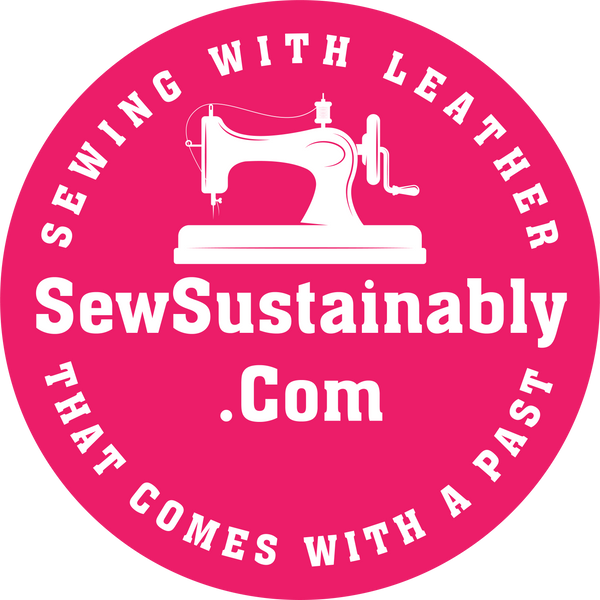
Let's Sew sustainably - Newsletter #2
Share

Hi
I hope you are well! It's still very warm here in Houston. Hope your weather is good as we move solidly into fall.
The articles in this issue are:
1. China's Rising Tide of Fast Fashion in Landfills
2. Sewing Leather on Your Home Sewing Machine - Part 1
3. My Upcycled Jeans bag on Display at Quilt Festival 2024


It's hard to beat the convenience and affordability of fast-fashion. These on-trend items, readily available in our local boutiques and malls, hit the high-notes of whatever is popular. Their appeal, though seductive, comes at a hidden cost, millions of tons of textile waste are accumulating in landfills, in China and around the world.
China produces almost 20 million tons of textile waste each year, with around 70% ending up in landfills. Most fast fashion items are poorly constructed, and use cheap materials causing consumers to dispose of them quickly. Many of these fast fashion items are made from synthetic materials, like polyester, that take hundreds of years to decompose. Once they break down, they release harmful chemicals and micro-plastics into the soil and water, contributing to pollution and greenhouse gas emissions.
As consumers, we in the sewing community, are on the forefront of groups consciously doing our part to mindfully repurpose, repair and upcycle fabric and materials that would otherwise end up in landfills.
We should also consider doing more business with brands that make sustainability a priority in their business practices. If you do a search on Sustainable Sewing Companies you will get a huge amount of information about companies that make sustainable practices a priority. The more we investigate sources like those the big corporations will begin to feel the pressure from consumers and begin to look at their sustainability practices.

Tip 1: Keep Your Sewing Machine Manual Close By
This may be the most valuable tip I have for you if you want to sew leather with your home sewing machine. Keep your sewing machine manual close by.
Your manual has a ton of valuable information for your specific machine. I have a few Singer sewing machines, a couple of Brother machines, and one Juki. They are all different and behave differently when sewing leather. I refer to my manuals often
Most manuals have troubleshooting guides in the back of the booklet with helpful suggestions on what to try when things don't go as expected.
To get the correct manual for your sewing machine you will need to know the model of your machine, for instance, Brother CS600i, Singer 99K, etc. (Don’t confuse this with the serial number which is is on the front plate of Singer sewing machines.) With vintage Singers, the serial number will lead you to the model number which will lead you to the correct manual.
Following are some free (and paid) resources you can use to locate a manual for your sewing machine.
Where to Find Sewing Machine Manuals Online
-
Manufacturer Websites:
- Brother (brother-usa.com): Offers manuals for their models through the support section.
- Singer (singer.com): Provides a database to search for your machine's manual.
- Janome (janome.com): Users can find downloadable manuals for various models.
-
-
Dedicated Manual Websites:
- ISMACS (https://ismacs.net/) Has an extensive database of vintage Singer machines and other brands as well. (Free Resource)
- Sewing Machine Manual (sewingmanuals.com): Offers a range of manuals for different brands and models, often available for a small fee.
- ManualsLib (manualslib.com): Hosts a wide variety of free downloadable user manuals, including those for sewing machines.
- eBay (ebay.com): Often has original and scanned copies of manuals for purchase, especially for vintage or discontinued models.
-
Dedicated Manual Websites:


|

|
While I hope this is the beginning of a wonderful friendship of sharing, if you prefer not to receive future emails click the unsubscribe link below. | |||
|
